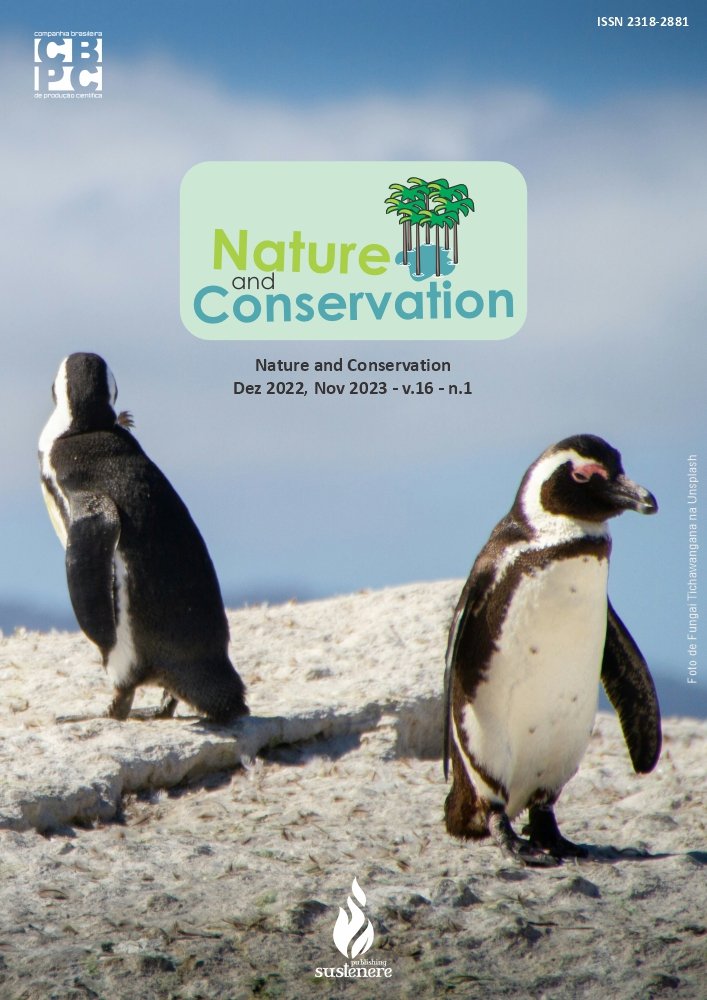Productivity and physical and chemical analysis of the quiabeiro in different types of coverage in the agricultural system
DOI:
https://doi.org/10.6008/CBPC2179-6858.2021.012.0021Keywords:
Abelmoschus esculentus, Nutrients, Cultivation techniquesAbstract
The use of ground cover is of great importance for agricultural management, as it promotes faster nutrient cycling, favoring its use by the crop. Thus, the objective of this work was to evaluate the influence of different coverings without soil in the productivity, humidity and acidity of okra. Santa Cruz 47 cultivar was used to carry out the experiment. The cultivars planted as cover were Milheto, Mucuna preta, Crotalaria Juncea and Feijão Guandu, with a control for comparative purposes. The experiment was conducted in the experimental area of the University of the State of Mato Grosso Unemat campus of Nova Mutum-MT, through a randomized block design. The spacing used was 1 m between lines and 0.30 m between plants, with four repetitions in each treatment. For physical and chemical evaluation ten plants were used per plot, they were harvested 66 days after sowing, and an analysis of total titratable acidity (titration), humidity (drying at 105 ° C) and pH (potentiometry) was performed. There were statistics for the number of fruits between treatments, with the highest average of fruits being obtained in the treatment with black Mucuna, followed by the difference in Milheto, after pigeon pea and Crotalaria juncea and the lowest amount of fruits was in the control. On the other hand, the highest average mass of the harvested fruits was obtained in the control without soil cover, Crotalaria juncea, followed by black Mucuna, Milheto and Guandu beans. Despite this difference in values, the treatments did not differ statistically at a significance level of 0.05%. The humidity of the okra does not differ from each other, with the lowest value found for okra grown in the control coverages and the highest value for millet. Regarding total acidity, the lowest value found and which differed from the other coverings was for the fruits grown with the cover of Millet (1.54 ± 0.12%). The acidity for black Mucuna (1.80±0.16%), pigeon pea (1.81±0.06%), Crotalaria juncea (1.88±0.09%) and control (1.83±0.10%) did not differ studied. It is concluded that the soil cover affects the acidity content and does not interfere in the moisture and productivity of the fruits, being able to be used as an alternative in an agroecological system.
Downloads
Downloads
Published
Issue
Section
License
Copyright (c) 2021 Ibero-American Journal of Environmental Sciences

This work is licensed under a Creative Commons Attribution-NonCommercial-NoDerivatives 4.0 International License.
The CBPC - Companhia Brasileira de Produção Científica (Brazil CNPJ: 11.221.422/0001-03) the material rights of the published works. The rights relate to the publication of the work anywhere in the world, including rights to renewals, expansions and dissemination of the contribution, as well as other subsidiary rights. All electronically published works may subsequently be published in printed collections under the coordination of this company and / or its partners. The authors preserve the copyright, but are not allowed to publish the contribution in another medium, printed or digital, in Portuguese or in translation.









